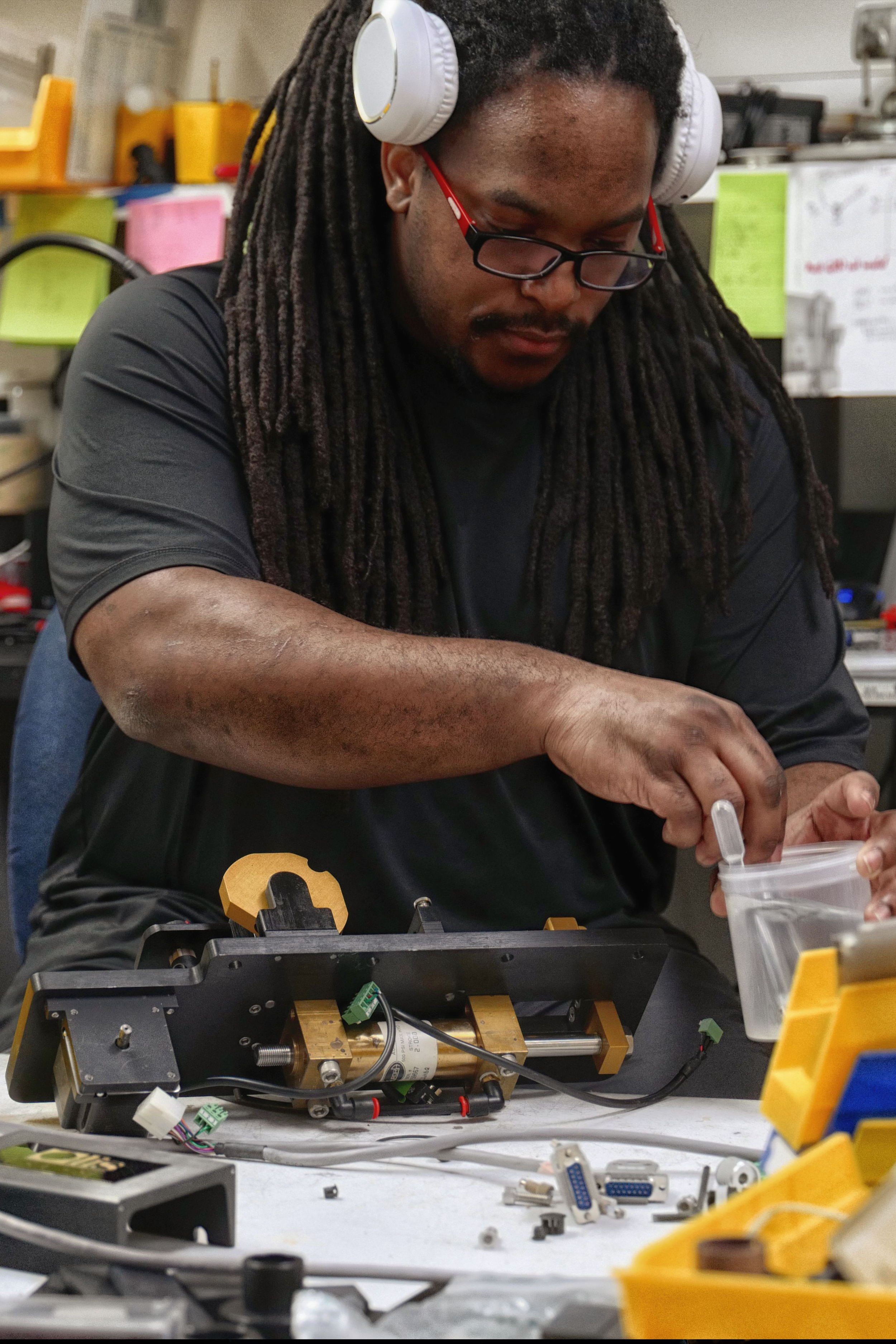More About Spectrophotometers
More About Spectrophotometers
Blog Article
The Of Circularly Polarized Luminescence
Table of ContentsThe Buzz on Circularly Polarized Luminescence4 Easy Facts About Circular Dichroism DescribedThe Only Guide to Uv/vis/nirCircular Dichroism Can Be Fun For AnyoneThe Main Principles Of Circular Dichroism

Spectrophotometry is a tool that hinges on the quantitative analysis of particles depending on how much light is soaked up by colored substances.
The Best Strategy To Use For Uv/vis
A spectrophotometer is commonly used for the measurement of transmittance or reflectance of options, transparent or opaque solids, such as sleek glass, or gases. Although lots of biochemicals are colored, as in, they absorb noticeable light and for that reason can be determined by colorimetric treatments, even colorless biochemicals can frequently be transformed to colored compounds suitable for chromogenic color-forming reactions to yield compounds appropriate for colorimetric analysis.: 65 Nevertheless, they can also be developed to measure the diffusivity on any of the listed light ranges that generally cover around 2002500 nm utilizing various controls and calibrations.
An example of an experiment in which spectrophotometry is used is the decision of the equilibrium constant of a service. A specific chain reaction within an option may occur in a forward and reverse instructions, where reactants form items and items break down into reactants. At some point, this chain reaction will reach a point of balance called a balance point.
The Of Uv/vis/nir
The quantity of light that goes through the solution is indicative of the concentration of particular chemicals that do not enable light to go through. The absorption of light is due to the interaction of light with the electronic and vibrational modes of particles. Each kind of molecule has a private set of energy levels related to the makeup of its chemical bonds and nuclei and therefore will absorb light of specific wavelengths, or energies, resulting in special spectral homes.
They are commonly used in numerous industries including semiconductors, laser and optical production, printing and forensic evaluation, as well as in labs for the study of chemical compounds. Spectrophotometry is often used in measurements of enzyme activities, decisions of protein concentrations, decisions of enzymatic kinetic constants, and measurements of ligand binding reactions.: 65 Eventually, a spectrophotometer is able to identify, depending on the control or calibration, what compounds are present in a target and precisely how much through computations of observed wavelengths.
Developed by Arnold O. Beckman in 1940 [], the spectrophotometer was produced with the help of his associates at his business National Technical Laboratories established in 1935 which would end up being Beckman Instrument Company and ultimately Beckman Coulter. This would come as an option to the previously developed spectrophotometers which were not able to take in the ultraviolet correctly.
Excitement About Circular Dichroism
It would be found that this did not provide satisfactory results, for that reason in Design B, there was a shift from a glass to a quartz prism which enabled for much better absorbance outcomes - UV/Vis (http://connect.releasewire.com/company/olis-clarity-343997.htm). From there, Design C was born with an adjustment to the wavelength resolution which wound up having 3 systems of it produced
It was produced from 1941 to 1976 where the cost for it in 1941 was US$723 (far-UV accessories were an option at additional cost). In the words of Nobel chemistry laureate Bruce Merrifield, it was "most likely the most essential instrument ever developed towards the improvement of bioscience." Once it became stopped in 1976, Hewlett-Packard produced the very first commercially available diode-array spectrophotometer in 1979 called the HP 8450A. It irradiates the sample with polychromatic light which the sample soaks up depending on its residential or commercial properties. Then it is transferred back by grating the photodiode variety which identifies the wavelength area of the spectrum. Ever since, the creation and execution of spectrophotometry gadgets has increased immensely and has actually become one of the most innovative instruments of our time.

The Best Guide To Uv/vis/nir
Historically, spectrophotometers utilize a monochromator consisting of a diffraction grating to produce the analytical spectrum. The grating can either be movable or repaired. If a single detector, such as a photomultiplier tube or photodiode is utilized, the grating can be scanned stepwise (scanning spectrophotometer) so that the detector can measure the light strength at each wavelength (which will correspond to each "action").
In such systems, the grating is repaired and the strength go to the website of each wavelength of light is determined by a various detector in the range. When making transmission measurements, the spectrophotometer quantitatively compares the fraction of light that passes through a referral solution and a test solution, then digitally compares the strengths of the 2 signals and computes the portion of transmission of the sample compared to the referral standard.

Report this page